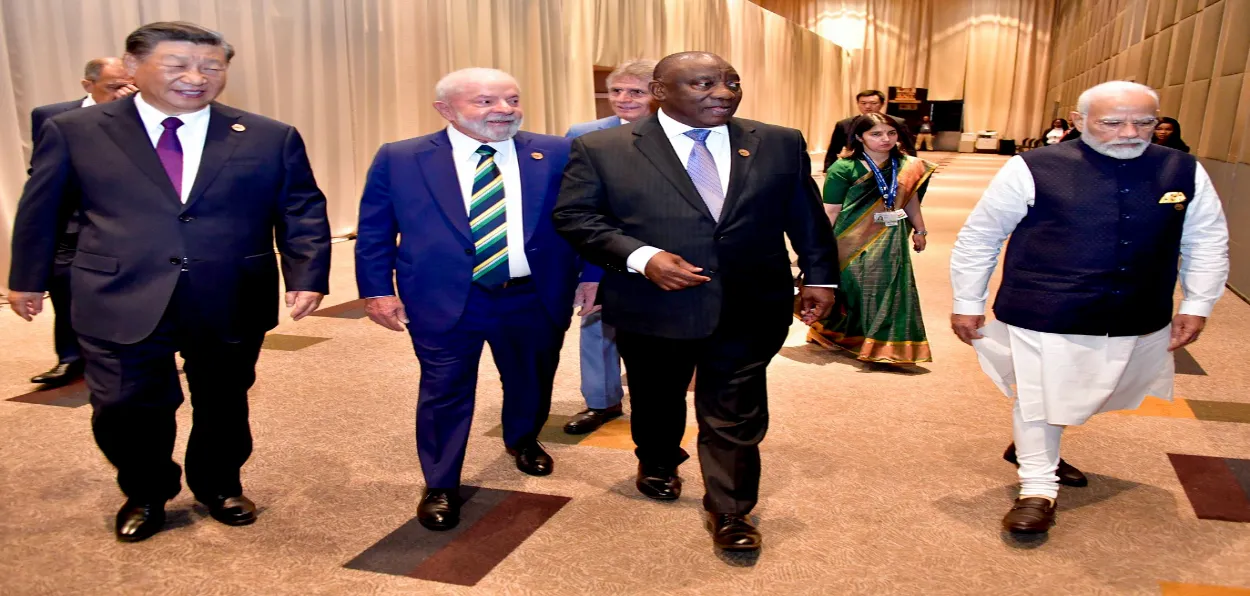
 Sushma Ramachandran
Sushma Ramachandran
The complexity of the India-China relationship has become even more tangled in recent weeks. As is evident, there is a wide gap between the tensions of political ties and the closeness on the economic and business front.
Even as border frictions have been growing in recent years, bilateral trade has risen while Chinese investments here have been going up. This is evident from mobile phone brands like Oppo, OnePlus, and Xiaomi becoming top sellers in India. Similarly, cheap Chinese goods in a wide variety of areas have been flooding markets for many years now.
The dichotomy in the relationship has been recognised for some time now but has come into prominence lately due to a crisis facing the electronics industry. Delays in visa clearances are said to be impacting the progress of major electronics projects. Even as the Foreign Ministry is viewing Chinese nationals with suspicion, their presence seems to be essential for the smooth running of many manufacturing units.
The response to this conundrum by an industry association has been to propose that India review trade ties with China, with the aim of gradually reducing the close linkage of the economic relationship. The Confederation of Indian Industry (CII) has declared that the country’s dependence on electronics components imports poses a “significant risk” to the long-term sustainability of the domestic manufacturing ecosystem.
On heavy import dependence of the electronics industry, the CII has justifiably highlighted the need to transition from import-dependent assembly-led manufacturing to component-level value-added manufacturing. It argues that this will be possible only by slashing tariffs on imported components to make domestic output competitive. Equally, it seeks enhancing incentives under the production-linked incentive (PLI) scheme to boost indigenous capacity.
In the short term, however, the CII seeks a review of the restraints imposed on investments by neighbouring countries stipulated under press note number 3. This was aimed as a curb on ballooning Chinese investments here and was issued during the pandemic. Concerned over the impact on the electronics industry, the CII has suggested adequate “guardrails” along with the review.
In making this recommendation, the industry body is only looking at the immediate crisis facing the electronics sector. Yet the India-China economic relationship needs to be viewed from a long-term perspective, rather than from the prism of the current scenario. Right now it is clear that there should have been more rapid indigenisation of components and accessories. The initial wave of setting up mere assembly line units for imported components was a positive achievement at the time since there were hardly any electronic hardware units in the country. However, efforts should have been made subsequently to bring about higher value addition so that the industry did not remain entirely reliant on imported components.
As far as overall trade and economic ties between the two countries are concerned, a review is undoubtedly needed right now. All aspects must be considered in the context of political fissures ever since the Galwan incident during the pandemic. The continuing hostilities at the border had prompted concerns over the dependence on one country for not just electronic goods but also other critical products like pharmaceutical ingredients and semiconductors. There has been a clamour ever since 2020 to reduce imports from China.
Such fears have not had any impact on the ground. On the contrary, imports have been steadily going up from 94 billion dollars in 2021-22 to over 118 billion dollars in 2023-24. The trade gap has also continued with exports much lower than imports.
Apart from trade, there is considerable investment by Chinese companies here largely in the mobile phones, automobiles, and power sectors. What is more, Chinese venture capital has been involved in many leading unicorns, an issue that has raised much controversy. On the other hand, Indian infrastructure and pharma companies have similarly made investments in China though not to the same extent.
The bottom line is that bilateral economic relations remain closely linked. This is despite efforts made ever since border frictions erupted four years ago to reduce the level of Chinese investments. This included the pathbreaking decision to ban TikTok and many other Chinese apps, which is now being seriously considered by several other countries. Subsequently, railway contracts with Chinese companies were terminated while they were also left out of highway projects and telecom firm Huawei was excluded from 5G trials. The issuance of press note number 3 specifying that government approvals would be needed for neighbouring countries was expected to be another deterrent to rising investments from the northern neighbour.
It is certainly true that no two large economies can carry out complete decoupling in the era of globalization; nor is it desirable, even if there are political and security tensions. Many countries continue to have close economic ties despite hostilities. For instance, China and the U.S. continue to have a huge trade relationship despite simmering tensions in recent years. Similarly, European countries are still buying natural gas from Russia despite the conflict in Ukraine.
In India’s case, however, it needs to make efforts to reduce dependence in a high technology area like electronics where supply cuts could affect a wide swath of industries. Similarly, a shortage of key pharma ingredients could cripple medical facilities in the country as was seen during the pandemic. It has to be recognised that prolonged frictions at the borders have the potential to disrupt trade flows and this, in turn, could affect industries relying on imports from China.
ALSO READ: Indian automakers embark on one trillion dollar export journey
So it may not be feasible to clamp down on all types of imports or investments from our northern neighbour but safeguards must be introduced to prevent any economic setback due to supply disruptions. In other words, the country needs to set up manufacturing facilities in some of the areas mentioned above. Alternatively, other sources of supply need to be identified in these sectors. The new government must review these issues and have a second look at the economic relationship with China in light of all these factors and the need to protect the country’s strategic interests.
